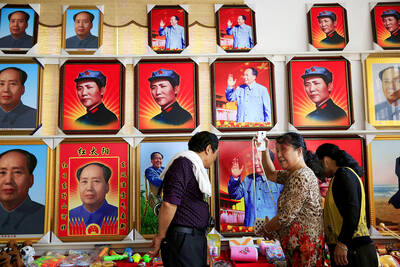As the effects of the Industrial Revolution made their way around the world, inevitable change followed. In Asia, the Qing Empire, reeling from the Opium and Arrow Wars and the Taiping Rebellion, found itself forced to open more and more treaty ports to survive. Japan, also forced to open treaty ports, responded with its Meiji Restoration (1868) and an eye for expansion. Thus Taiwan with four Qing treaty ports on its western shore and Japan to the north could not avoid the ensuing cauldron of trade, commerce and “progress.” Into this developing mix came Charles W. Le Gendre, a US Civil War General.
Unlike the fictitious “lost” Captain Nathan Algren, played by Tom Cruise in the film The Last Samurai, Le Gendre came to Asia with more definite career opportunities in mind. He began as American Consul in Amoy (Xiamen) from 1866 to 1872. Notes of Travel in Formosa, a massive, four volume opus containing 29 chapters and edited by Douglas L. Fix and John Shufelt, is about those years and provides a much needed insight into the author and the larger mosaic of Taiwan history being shaped at that period.
As Consul in Amoy, Taiwan fell under Le Gendre’s jurisdiction, and two pivotal shipwrecks, the American Rover (1867) and a Ryukyuan ship (the Peony Tribe/Mudan Incident, 1871), happened off the island during his watch. The massacre of the surviving crews of those wrecks called for a diplomatic but satisfactory resolution as well as the prevention of future killings. Le Gendre’s success in handling these two, particularly the latter, would lead to his next position, advisor to the Meiji government (1872 to 1875). There he would complete his Notes.

Le Gendre is a man whose wide, colorful and varied life calls for at least one good, comprehensive biography but that is not the task here. Fix and Shufelt have wisely chosen to focus their efforts to presenting his monumental work. To it they add comprehensive annotations and commentary of their own, including an examination of the work’s formative completion in Japan. Thus this work, previously only available in the US Library of Congress, is now available to a wider audience.
Between the years 1867 and 1872, Le Gendre as Consul, would make at least eight trips to Taiwan, far more than the obligatory once every three years visit by the Chinese Viceroy dwelling at Foochow (Fuzhou). His visits frequently included meetings with Tauketok, chief of the 18 tribes in the south where the shipwrecks took place and with whom he achieved a workable treaty. Notes, however, does not follow those eight trips in strict chronological order. Instead Le Gendre chooses to present a composite picture of the island as seen from north to south. In the Textual Introduction, Shufelt suggests that Le Gendre’s aim was to show his comprehensive knowledge of the island should an expansionist Japan choose to occupy it and seek an administrator. It would not happen at that time.
For this reason, eschewing the travelogue style popular at that time, Le Gendre presents his travels with a more “encyclopedic” format including his geological, indigenous languages and resource comments. Because of this, the average reader may find some sections less appealing; not all encyclopedic entries meet everyman’s tastes. Nonetheless, by including Le Gendre’s detailed descriptions, Fix and Shufelt make sure that we get a full picture of the man and all his insights and observations on Taiwan.
Notes further includes some 170 photographs, and a series of illustrative paintings by the Japanese artist, Kobayshi Eitaku (1843—1890) all commissioned and collected by Le Gendre, as well as maps that he composed. The maps would be extremely helpful in the upcoming Japanese Mudan punitive expedition (1874), which Le Gendre helped plan. Fix further adds an almost day-by-day itinerary of Le Gendre’s eight trips and Huang Chi-wei (黃智偉) provides a “placename” reference map.
In Notes we see a Le Gendre who is a capable and pragmatic player that lives and functions where the proverbial rubber meets the road. There is little “gushy” admiration of “5000 years” of Chinese culture that some travelogue writers might present. Instead Le Gendre includes realistic and sometimes harsh observations. Piracy is a constant threat to local trade. A sharp distinction is made between the Chinese portion of the island and the indigenous controlled territories that are “outside the jurisdiction of the Emperor.”
Warfare is a constant threat between the ethnic groups and in many areas weapons are carried wherever one goes. The rules and laws of the Qing government serve as a “pretext for exacting money from the people” with officials “purchasing” posts anywhere from “$50 to $200,000.” In turn they subsequently “extort” money from the subject people to reimburse themselves. The industrious Hakka live nearest to the indigenous tribes intermarrying and often serving as middlemen to the benefit of both but they also can be “cunning” and “perfidious.” The indigenous (generally described in a favorable manner) are not united and would have to be “subdued” or worse. Most telling of all is Chapter 24, titled Has Japan the Right to Assume Suzerainty over Aboriginal Formosa?
The National Museum of Taiwan History (Tainan), the editors, and all involved (reference the three page list of acknowledgments) have done yeoman service in “freeing” Notes from the US Library of Congress. And given the enormous effort put into this work, one hesitates to indicate omissions and suggestions, but a review is not complete without such.
These range from minutia such as Huang Chi-wei’s placename map omitting the frequently mentioned Taiwanfoo; Appendix One strangely lists a focus on 1850 to 1875 but includes people of a much earlier era yet omits the central Tauketok. An opportunity to visually contrast and reveal Le Gendre’s choice of a topical format is missed by not taking Fix’s painstaking chronology of the eight visits and separately tracing them place by place on Huang Chi-wei’s map. Similarly a simple chronological timeline of related pertinent developing realities could avoid the “isolationist tag” of most research and integrate it with Le Gendre’s intriguing future casting of his lot with Japan and Korea and the eventual 1895 acquisition of Taiwan by Japan. Such trivia aside, Notes of Travel in Formosa is an essential work for anyone interested in treaty port era Taiwan to read if not make part of one’s personal library.

Taiwan can often feel woefully behind on global trends, from fashion to food, and influences can sometimes feel like the last on the metaphorical bandwagon. In the West, suddenly every burger is being smashed and honey has become “hot” and we’re all drinking orange wine. But it took a good while for a smash burger in Taipei to come across my radar. For the uninitiated, a smash burger is, well, a normal burger patty but smashed flat. Originally, I didn’t understand. Surely the best part of a burger is the thick patty with all the juiciness of the beef, the

The ultimate goal of the Chinese Communist Party (CCP) is the total and overwhelming domination of everything within the sphere of what it considers China and deems as theirs. All decision-making by the CCP must be understood through that lens. Any decision made is to entrench — or ideally expand that power. They are fiercely hostile to anything that weakens or compromises their control of “China.” By design, they will stop at nothing to ensure that there is no distinction between the CCP and the Chinese nation, people, culture, civilization, religion, economy, property, military or government — they are all subsidiary

This year’s Miss Universe in Thailand has been marred by ugly drama, with allegations of an insult to a beauty queen’s intellect, a walkout by pageant contestants and a tearful tantrum by the host. More than 120 women from across the world have gathered in Thailand, vying to be crowned Miss Universe in a contest considered one of the “big four” of global beauty pageants. But the runup has been dominated by the off-stage antics of the coiffed contestants and their Thai hosts, escalating into a feminist firestorm drawing the attention of Mexico’s president. On Tuesday, Mexican delegate Fatima Bosch staged a

Would you eat lab-grown chocolate? I requested a sample from California Cultured, a Sacramento-based company. Its chocolate, not yet commercially available, is made with techniques that have previously been used to synthesize other bioactive products like certain plant-derived pharmaceuticals for commercial sale. A few days later, it arrives. The morsel, barely bigger than a coffee bean, is supposed to be the flavor equivalent of a 70 percent to 80 percent dark chocolate. I tear open its sealed packet and a chocolatey aroma escapes — so far, so good. I pop it in my mouth. Slightly waxy and distinctly bitter, it boasts those bright,